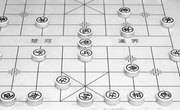Project display boards may be a requested form of assignment for a science fair, book study, geography project or cross-curricular study unit. The huge, tri-folded, blank cardboard slate sitting in front of you can seem daunting. However, with a little planning and preparation, your display board may not only become a superior project but an enjoyable process. Often when creating the project, wonderful ideas turn out with less than perfect results. Avoid this pitfall through a simple planning process that helps you to be sure each piece of your information is perfectly suited to the theme of the project display board.
Plan the text for your display board on a piece of plain paper. Come up with an eye-catching title to display prominently in the center of your board. Under the title, place your name. Decide on the categories of information you will need on your display board. Create subtitles for those categories. If making a science display board, those subtitles may be your question, hypothesis, experiment steps, data and conclusion. If a literature based project, your display board may need subtitles such as setting, plot, characters, problem, solution and critique. Plan any additional text for your display board in bullet form, not paragraphs.
Plan the placement of graphics for your display board on a piece of paper as well. If using pictures you took, decide where to place each and create a caption for it. If you need to gather graphics from other sources, be sure and cut them out neatly and provide captions. Charts and graphs may be appropriate additions to your project display board. If so, check the accuracy of each and find a suitable size, then plan where on the board these will fit. Be sure to mark a place for each graphic on your planning paper to ensure everything will fit.
Enhance your project by planning and applying to your board a color scheme that suits your subject matter. Stick with two or three basic complimentary colors so that the colors do not overwhelm your information. Use acrylic paint to cover the entire display board in one to three different colors. Alternatively, you might wish to cover the entire display board surface with paper in blocks of color rather than paint it. Either way, color used wisely can enhance your display board project.
Unless you will be printing all text by hand and drawing all your own pictures and charts, you will need to print some items from the computer. Use fonts wisely when printing your text. A little color goes a long way. Use dark colors and easily read, large fonts. Do not use more than three different fonts. Be sure that titles and subtitles are in larger fonts and bold-faced. Before printing charts, graphs or pictures, be sure of the size that you need so that you do not waste ink printing out bigger pictures than you can use. If printing all text by hand and drawing all pictures, use pencil first so that erasing is possible but go over all pencil marks with markers or other colored media.
Before you attach any items to the display board, cut and trim all items neatly. Lay out every item on the display board without glue first. Make sure all items fit properly. Place your main idea or primary information in the center of the project display board. Place your title and name there as well. Group all other information by category and display it in different areas of the project board. Use a ruler to assist you in making sure that all items remain straight. Proof your work for errors before displaying it.
Tip
Always allow plenty of time for putting the board together in case something is missing or does not fit.
Related Articles
Tips
- Always allow plenty of time for putting the board together in case something is missing or does not fit.
Writer Bio
Elizabeth Stover, an 18 year veteran teacher and author, has a Bachelor of Science in psychology from the University of Maryland with a minor in sociology/writing. Stover earned a masters degree in education curriculum and instruction from the University of Texas, Arlington and continues to work on a masters in Educational Leadership from University of North Texas. Stover was published by Creative Teaching Press with the books "Science Tub Topics" and "Math Tub Topics."









